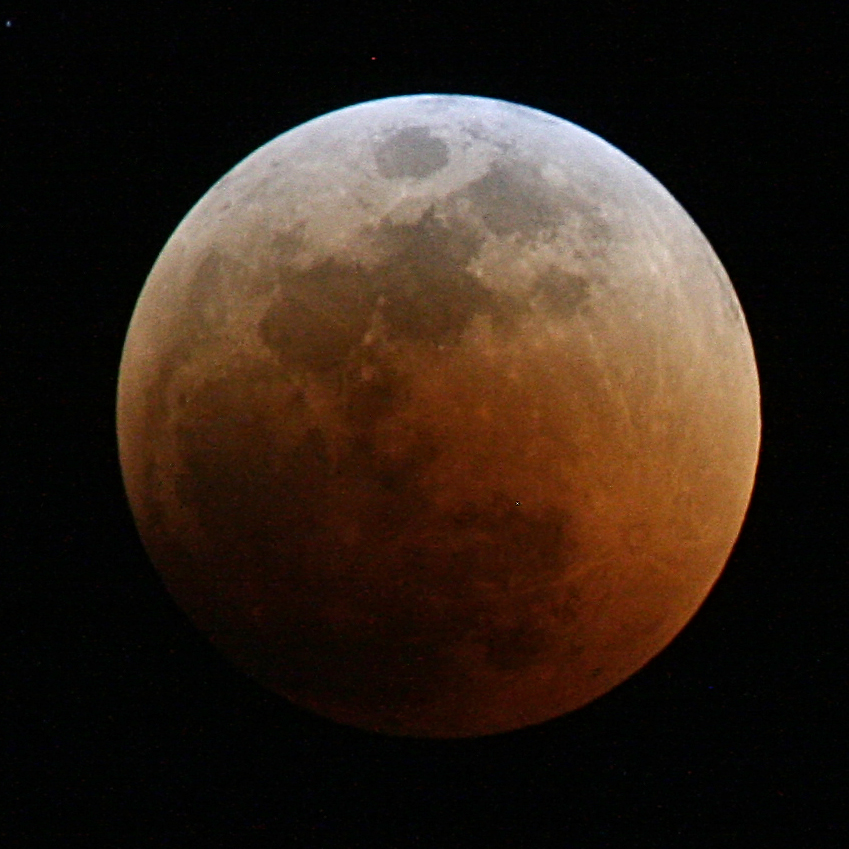Science News
Monday's Lunar Eclipse
April 11, 2014
by Bing Quock

On the night of April 14th and early morning hours of the 15th, skywatchers will be treated to a total lunar eclipse, visible high in the heavens throughout the United States—weather permitting, of course.
As the Moon orbits Earth, it occasionally passes directly in line with our planet and the Sun. When it passes between them, the new moon may cast its shadow onto Earth’s surface, causing a solar eclipse. In the case of early next week’s lunar eclipse, the Sun and the Moon will be on opposite sides of the sky, as is the case every full moon—but unlike the typical full moon, they’ll be lined up so precisely that the Moon will pass through the Earth’s shadow, producing a total lunar eclipse. The partial phase of the eclipse will begin at 10:58 pm PDT (or 1:58 am EDT), when the shadow’s curved edge can be seen slowly creeping across the Moon’s face. Thousands of years ago, Greek scholars observed this curvature, proving to them that our planet is spherical in shape.
Totality occurs at 12:06 am PDT (3:06 am EDT), when the entire Moon is a rusty reddish color. This color is caused by Earth’s atmosphere as it refracts, or bends the Sun’s light like a giant prism, filling in what would otherwise be a dark shadow with the reddish hue of all the sunrises and sunsets happening on Earth at that time. The intensity of the color varies depending on how clear the atmosphere is in those areas where sunlight is passing through. During totality, look near the Moon for both the red planet Mars and—even closer—the star Spica in Virgo the Maiden. Both will be visible in the glare of the full moon even before the eclipse begins, but notice how the decrease in the Moon’s brightness during totality makes them more visible.
The Moon begins exiting Earth’s shadow, ending totality, at 1:25 am PDT (4:25 am EDT). About an hour later, at 2:33 am PDT (5:33 am EDT), it will have completely left the shadow, returning to its usual brilliance.
Unlike eclipses of the Sun, lunar eclipses are perfectly safe to observe without special filters because the Moon is so much fainter than the Sun, and skywatchers can view without having to worry about eye-damage.
In the mythology of ancient cultures, eclipses were disturbing events, whether of the Sun or the Moon, because it seemed as if the presumed guardians of the day and night skies might disappear. Invariably, the reddish color of totality during a lunar eclipse was interpreted as blood resulting from an attack on the Moon. Many people thought they could rescue the Moon by making noise or dancing to frighten away its attackers. Fortunately, it always worked. But don’t disturb your neighbors by doing likewise—just enjoy the natural rhythms of the Universe as our planet’s shadow crosses the face of the full Moon.
On April 14th, the San Francisco Amateur Astronomers will host a free eclipse-watching party at Park Chalet near Ocean Beach, starting at 9:00 pm and lasting throughout the eclipse. Sign up here.
Bing Quock is the assistant director of the Morrison Planetarium.
Image of June 2011 eclipse: Muhammad Mahdi Karim/Wikipedia